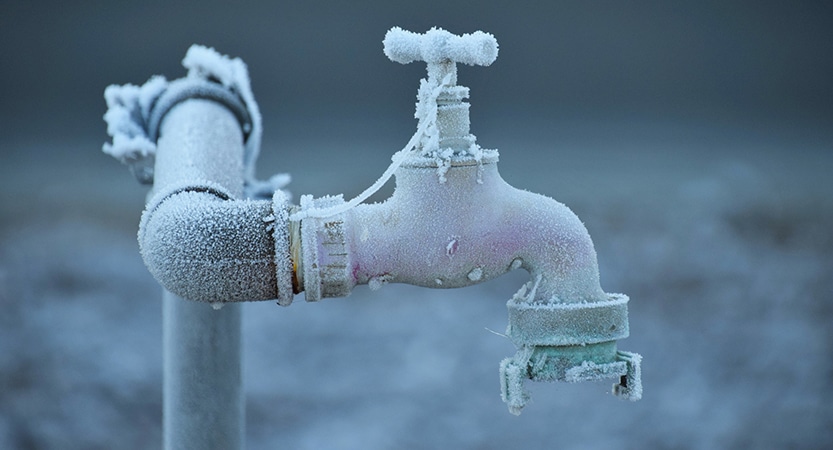Tips to Keep Your Pipes from Cold Weather Issues: Essential Tips
Tips to Keep Your Pipes from Cold Weather Issues: Essential Tips
Blog Article
We have found this great article about Preventing and dealing with frozen pipes listed below on the internet and accepted it made perfect sense to talk about it with you over here.

Cold weather can wreak havoc on your pipes, especially by freezing pipes. Here's how to avoid it from happening and what to do if it does.
Introduction
As temperatures decrease, the risk of frozen pipelines increases, potentially causing costly repairs and water damages. Recognizing just how to stop frozen pipelines is crucial for house owners in cold environments.
Recognizing Frozen Pipelines
What causes pipes to ice up?
Pipes ice up when subjected to temperatures below 32 ° F (0 ° C) for prolonged periods. As water inside the pipes freezes, it increases, putting pressure on the pipeline wall surfaces and possibly causing them to burst.
Threats and problems
Frozen pipelines can bring about water system disturbances, property damage, and expensive repair work. Burst pipes can flooding homes and cause extensive structural damage.
Signs of Frozen Pipes
Determining frozen pipelines early can stop them from bursting.
Just how to recognize frozen pipes
Seek decreased water circulation from faucets, unusual odors or noises from pipes, and noticeable frost on subjected pipes.
Avoidance Tips
Shielding prone pipelines
Wrap pipes in insulation sleeves or utilize warmth tape to shield them from freezing temperature levels. Focus on pipelines in unheated or outside locations of the home.
Heating techniques
Keep interior spaces effectively heated up, specifically locations with plumbing. Open cupboard doors to enable warm air to flow around pipes under sinks.
Shielding Outside Pipes
Yard hoses and exterior faucets
Disconnect and drain pipes yard hose pipes before winter months. Set up frost-proof spigots or cover outdoor faucets with protected caps.
What to Do If Your Pipes Freeze
Immediate activities to take
If you think icy pipes, maintain taps open to relieve pressure as the ice melts. Use a hairdryer or towels taken in hot water to thaw pipelines gradually.
Long-Term Solutions
Structural adjustments
Consider rerouting pipes away from outside wall surfaces or unheated areas. Add added insulation to attics, basements, and crawl spaces.
Updating insulation
Buy high-quality insulation for pipes, attics, and walls. Appropriate insulation assists preserve constant temperatures and decreases the danger of frozen pipes.
Verdict
Avoiding frozen pipelines calls for positive measures and quick reactions. By understanding the causes, signs, and preventive measures, homeowners can secure their plumbing during winter.
6 Proven Ways to Prevent Frozen Pipes and Protect Your Home
Disconnect and Drain Garden Hoses
Before winter arrives, start by disconnecting your garden hoses and draining any remaining water. Close the shut-off valves that supply outdoor hose bibs and leave the outdoor faucet open to allow any residual water to drain. For extra protection, consider using faucet covers throughout the colder months. It’s also important to drain water from any sprinkler supply lines following the manufacturer’s directions.
Insulate Exposed Pipes
Insulating your pipes is an effective way to prevent freezing. Pipe insulation is readily available at home improvement stores and is relatively inexpensive. Pay close attention to pipes in unheated areas such as the attic, basement, crawl spaces, or garage. Apply foam insulation generously to create a buffer against the cold. You can also wrap your pipes in heat tape or thermostat-controlled heat cables for added warmth.
Seal Air Leaks
Inspect your home for any cracks or openings that could let in cold air. Seal any holes around the piping in interior or exterior walls, as well as the sill plates where your home rests on its foundation. Additionally, make sure to keep your garage door closed unless you’re entering or exiting. Leaving it open creates a significant air leak that can lead to frozen pipes.
Allow Warm Air Circulation
During cold snaps, it’s essential to allow warm air to circulate evenly throughout your home. Leave interior doors ajar to promote better airflow. Open kitchen and bathroom cabinets to help distribute heat consistently around the rooms. If you have small children or pets, be sure to remove any household chemicals or potentially harmful cleaners from open cabinets for safety.
Let Faucets Drip
A small trickle of water can make a big difference in preventing ice formation inside your pipes. When temperatures drop significantly, start a drip of water from all faucets served by exposed pipes. This continuous flow helps prevent the water from freezing. Additionally, running a few faucets slightly can relieve pressure inside the pipes, reducing the chances of a rupture if the water inside does freeze.
https://choateshvac.com/6-proven-ways-to-prevent-frozen-pipes-and-protect-your-home/

Hopefully you enjoyed reading our article on Preventing and dealing with frozen pipes. Thanks a ton for taking time to read through our posting. Enjoyed reading our blog entry? Please quickly share it. Help another person find it. Many thanks for your time. Return soon.
Get Started Report this page